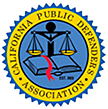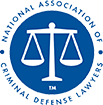Until recently, the law relied on the process of elimination, commonly known as negative corpus, to prove arson cases. This investigation method is no longer applicable. It was removed from the National Fire Protection Association fire investigation manual back in 2011. In the past, the negative corpus was an accepted practice. If the fire investigators did not have a viable ignition source, they assumed that it had to be arson. The negative corpus was more like an approved scientific way of ruling arson without basing the verdict on specific evidence. If the investigators failed to find an ignition source, they often assumed that this meant that the fire was burning hot and fast. The common assumption was that a hot, fast, or low burning fire indicated arson.
In the early arson investigations and forensics, the only issue that most investigators did was look for signs of gasoline on a piece of rugs found in the fire scene. If the investigators found an artifact and gasoline, they would assume that gasoline caused the fire, thus assuming it was an arson case. While in the field, the investigators based their conclusions on anecdotal experience. The problem is that relying on anecdotal evidence often made the investigators make the wrong decision. As the science behind arson investigations continues to evolve, fire researchers have shattered numerous arson myths.
Wrong Convictions
Due to the faulty arson investigations, there are people still in prison who may have been wrongly convicted of arson. Many people have been wrongly convicted of arson, despite mounting strong evidence in their defense. The past arson investigations and forensics have been quite spotty and tricky. To some extent, the courts are still convicting people using faulty evidence despite the continued effort by fire researchers to shatter arson myths.
An arson investigation is a complex endeavor. It requires practitioners to make many sophisticated decisions that involve physics and chemistry. It would be wonderful if all fire investigators were up to the task. Unfortunately, most public sector fire investigators acquire their training on the job. Most investigators follow the belief systems of their seniors. As a result, the fire investigation profession has many people who don’t know what they are doing within its ranks.
The History Of Fire Research
The modern-day fire research dates back to the 1970s when consumer protection was politically popular and funding was plentiful. According to a report produced in 1973 known as America Burning, the fires in the United States caused annual damage of more than $11 billion and took an estimated 12,000 lives. Later, these numbers were found to be exaggerated. However, this research prompted Congress to support the novel field of fire research. To support this research, Congress established a Center for Fire Research. The center was established at the National Bureau of Standards (NBS), currently known as the National Institute of Standards and Technology. Before this time, fire safety science did not exist in the U.S.
Vytenis Babrauskas became the first American to pursue a Ph.D. in fire science from the University of California in 1976. The NBS set aside a budget to hire young engineers as it began exploring the question of how to measure fires quantitatively. While working at the NBS in the 1980s, Babrauskas invented a device known as a cone calorimeter. This device effectively measured a wide range of variables, including the chemical composition of fumes, the pressure, and opacity of escaping gases, the accumulated energy released, the temperature, the weight of soot compared to the weight of the original substance, and the opacity of smoke.
However, only the hire-profile arsons attracted the attention of extensively trained scientists who used expensive technology to investigate them. The average local fires did not attract these investigators. As a result, the police continued to investigate the typical local arsons. Most of these police officers had never acquired college-level physics or chemistry. Most of them learned on the job by watching how arson investigators handled cases.
The Bureau of Alcohol, Tobacco, Firearms, and Explosives conducted the newest research on how fires start and burn. As fire research progresses, there is hope that arson investigation will become a more exact and specific science.
Arson Investigation Still Has Further To Go
Arson investigations have come a long way. However, some investigators think that it still has further to go, given that law enforcement officers need to know a little more about fire science. The majority of fire investigators today do not meet the required standards. For example, many of them cannot determine how much energy it takes to light a room.
According to John Lentini, a fire investigator, most fire units do not set aside enough resources for the science of fire investigation. For decades, junk science characterized fire investigations, which is to blame for the numerous questionable fire convictions. Fire investigations have evolved to more scientific methods, even as old arson cases are overturned. This evolution has led to the dismissal of the flawed past methods. Today, arson investigations cost more and take longer. Arson investigators also adopt higher standards in proving criminal arson cases. Both the past and the current arson investigation methods revolve around one objective figuring out where and how a fire started.
Junk Science Of Past Arson Investigations
The process of elimination, commonly known as a negative corpus, was the primary way of proving arson cases. Effective 2011, this method no longer exists in the National Fire Protection Association's manual. For a long time, the process of elimination was accepted. If you did not have a way of proving the source of ignition, it had to be arson. Some people argued that negative corpus was a way of ruling arson without any scientific evidence. Many investigators relied on evidence that indicated that a fire had burned hot and fast when they could not find an ignition source.
The definition of a fast fire did not exist at the time, and it is still not backed by any scientific research. For example, if you light a fire in a wastebasket against a wall, the fire typically spreads to form a V mark on the wall. The assumption was that if the V mark on the wall was narrow, it indicated a fast fire and thus had to be arson. What the investigators did not consider is that many factors can play into a fire's speed, in addition to the use of gasoline. For instance, if fire comes into contact with combustible substances like newspaper or fabric, it could have the same effect as a fire associated with gasoline or petroleum.
The junk science also assumed that hot fires mainly resulted from arson. Therefore, the investigators would look for signs like melted metal and shiny patterns on wood and cracked glass on windows. They assumed that all these were signs that rocket fuel or gasoline was used to accelerate the fire. However, shattered glass does not result from extreme heat but extreme cooling, like when cold water comes into contact with hot glass. There is also no clear definition of a hot fire.
How Arson Investigations Work Today
Real arson investigations lack the speed and glamor shown in movies. Determining the source and origin of a fire is a process that can become highly technical and meticulous when done right. Investigating arson takes a long time because it involves piecing together different pieces of evidence.
When arson investigators walk into a room, they start at the area of least damage, moving towards the section with the most damage. Sometimes, the investigators have to stand back first. Examining the path of destruction is always an excellent point to start. Also, examining what the fire has done to materials tells a lot about where it originated and how it began.
When arson investigators get to a fire scene, they observe as they rule out the potential sources of fire. For instance, they may consider whether the iron was plugged in, whether the circuit box is damaged, and if the smoke alarm is turned off. At times, the investigators examine the scene shovel by shovel and send samples to the relevant forensic labs to rule out the various accelerants.
If the origin and the cause of the fire are known, ruling it intentionally or accidental is not tricky. For example, if a fire is caused by arson, it does not take long to figure it out. Most people who commit arson use liquids like gasoline, which are easy to detect. Arsonists also tend to start a fire in more than one place, thinking that the fire will burn the same way, but this does not happen. If investigators determine three origins of fire, they can easily conclude that it was arson.
Currently, arson cases are built with more than the physical evidence collected at a crime scene. Investigators have full police authority and use criminal databases and subpoenas to collect phone data. They also examine surveillance footage and employee lists to help them find suspects. People trip themselves up very easily in the course of investigations. Certain suspicious fires are often more open-ended. If the investigators cannot find the ignition source, they make it undetermined. This is a fact of life. Even with the current modern methods of fire investigations, some fires are impossible to solve.
Investigating An Alleged Arson
While investigating an alleged arson, the first step involves determining if, indeed, the fire was intentionally set. This step requires expert assistance from an experienced fire investigator except in the obvious cases. Unfortunately, many present fire investigators in the U.S. are not qualified, leading to numerous injustices. Many innocent citizens have been wrongly convicted of arson, and there is no DNA to set them free. In the United States, a post-conviction release is rare, but it seems to be happening in many arson cases.
The Importance Of Determining The Origin
The main problem with determining the wrong fire origin is the inability to trace the ignition source. Finding an origin without an accidental ignition source often makes investigators who don’t understand fire dynamics conclude that someone must have placed fuel at the origin and used an open flame to ignite it. For example, if there is an irregular burn pattern on a carpet at the origin, the investigator might assume that someone set the fire intentionally using a flammable liquid even in the absence of a positive laboratory report.
The key to a correct fire source determination is finding the valid fire cause. Finding the correct fire origin is the most intricate part of investigating a fully involved compartment fire. The prevention and punishment of arson is a crucial function, but it is not as simple as it was in the past. The new knowledge regarding fire behavior and determining the origin of a fire that burned beyond flashover has imposed new burdens on the people responsible for investigating arson.
With the fundamental unreliability of many fire origin determinations, fire investigators and experts need to accept the fact that, at times, the best answer available in a fire investigation could be "undetermined." It is okay to consider a fire origin undetermined if the incendiary or accidental call is not supported by conclusive evidence.
Find a Criminal Defense Attorney Near Me
Arson investigations are often complicated. If an unqualified fire investigator conducts an arson investigation, a wrongful conviction is likely. Many people have faced severe arson criminal charges due to wrong accusations resulting from wrong fire investigators. Given the seriousness of an arson charge, it is essential to ensure that you contact an experienced criminal defense attorney immediately after you learn that the law enforcement officers are investigating you for arson. Your attorney could help you understand the new changes in arson investigations and probably hire a private fire investigator to determine whether you indeed committed the alleged crime. You should also contact an attorney if you have already been convicted but feel that you are a victim of a rogue arson investigation. The Law Office of Sara L. Caplan provides reliable legal representation in Los Angeles, CA. Contact us 310-550-5877 at and speak to one of our attorneys.







